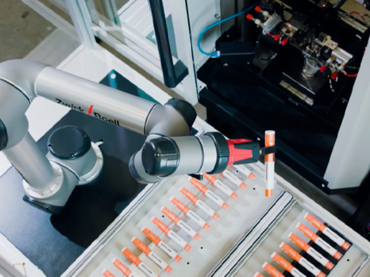Revolutionize Your Medical Device Testing Processes: When Automation Equals Robot
We recently published an article on the wide range of automated testing options for drug delivery systems. To recap briefly, automating your testing processes even for a single specimen can provide a wide range of benefits, especially when compared to manual testing. Our goal with the last article was to squash the misconception that automation is always synonymous with robot.
Now we’re back to talk about situations when testing drug delivery devices greatly benefits from the use of robots, also referred to as automated handling systems. The most obvious reason is throughput.
If a robot is currently on your radar, keep in mind that these specimen handlers vary in size, capability, and complexity, and at any capacity—depending on your needs, requirements and objectives—their contribution may prove to be the perfect, and yes economically feasible, solution. In addition to throughput, there are a variety of considerations. ZwickRoell focuses on three core aspects:
- Only the specimen counts
Measurement results are influenced by three factors: the machine, the operator, and the material/specimen. What you ultimately care about is the specimen, and in order to focus on the specimen only, both machine and operator influence must be reduced to a minimum, or ideally eliminated. This is accomplished through standardization of test programs, working procedures, fixtures including grips and extensometers, and finally through automation—which all together reduce any unwanted influences from the operator and the machine almost down to zero. - Flexibility
Smart robots have elevated testing flexibility. For you, this means that regardless of what your test requirements are today, robots can be adapted, and additional handling systems can be added to meet your requirements in the future. In the case of ZwickRoell’s roboTest N, flexibility also refers to the simplicity of relocating the robot from one machine to another. This allows you to run various types of tests using multiple machines—the robot is not a fixture, but rather a flexible, movable testing asset in your lab. - Future viability
Regardless of your existing testing system’s level of automation—even if this means that you don’t have a need for automation today—a robot can be easily added in the future according to your changing needs. Your extensometers, grip and data import and export functions form a solid base to increase your automation functionality.
When it comes to medical device testing with robots, there are two main approaches:
1. Batch release testing
The finished product is tested for market release. Key considerations in this case are documentation and a smooth, continuous test process.
2. Research and development
This requires a high level of flexibility. The ability to change parameters and devices as they develop throughout the R&D cycle, while maintaining reliable test results and documentation is key.
